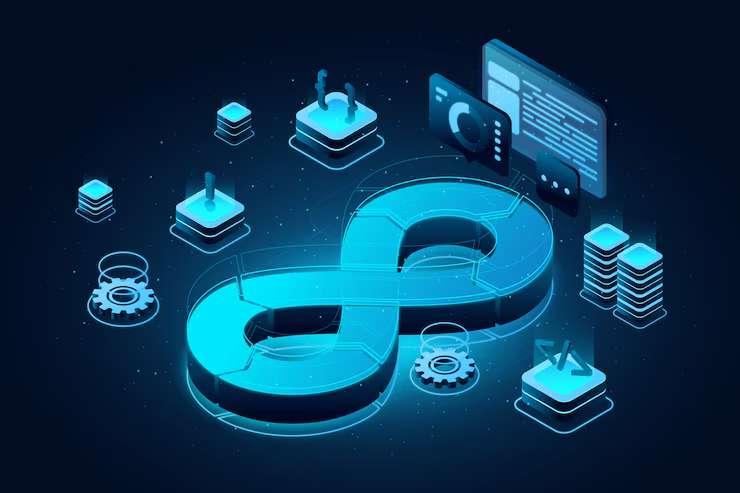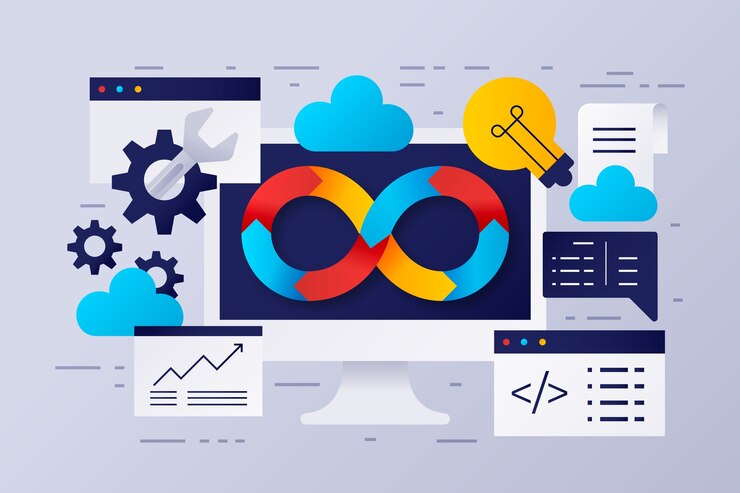The world of software development is changing rapidly. Gone are the days when applications were built as large, interconnected blocks of code. Today, developers are embracing smaller, more manageable units known as microservices. Alongside this shift, serverless computing is gaining traction, further transforming how applications are built and deployed. Together, these approaches simplify development and align perfectly with DevOps practices, enabling teams to respond quickly to changing business needs.
Page Contents
The Shifting Landscape of Software Development: From Monoliths to Microservices
In traditional software development, monolithic architectures were the norm. These involved building a single application that rolled out updates and changes simultaneously. This method could create bottlenecks, leading to longer release cycles and increased chances of failure. However, DevOps consulting company like Quema are revolutionizing this approach by breaking down applications into smaller, independent services.
Microservices change the game. Instead of a single, massive application, microservices break down functionality into smaller services. Each service handles specific tasks and communicates with others through APIs. This modular approach improves:
- Scalability: Teams can update and scale individual services without affecting the entire application.
- Resilience: If one microservice fails, the others can continue functioning.
- Maintainability: Smaller codebases are easier to manage, test, and deploy.
The Rise of Serverless: Automating Infrastructure Management
Serverless computing eliminates the need for developers to manage servers. Instead, they can focus solely on writing code. In a serverless model, infrastructure is automatically handled by a cloud provider when functions are invoked, freeing teams from operational concerns.
Why Serverless and Microservices are Key to DevOps Success
Combining serverless with microservices leads to remarkable efficiencies. This synergy allows organizations to deploy applications faster, swiftly respond to market changes, and improve team collaboration. Automation becomes a driving force behind seamless integration and delivery, enabling continuous deployment practices and rapid iterations.
Understanding Microservices Architecture
Defining Microservices: Principles and Characteristics
Microservices architecture fosters an environment where applications are divided into smaller, independent services. Each microservice can be developed, deployed, and maintained independently.
Key characteristics include:
- Decentralized Data Management: Each microservice can have its database.
- Autonomous Deployment: Developers can update services independently with minimal impact.
- Specialization: Each service can be designed to perform a specific task efficiently.
Benefits of Microservices: Scalability, Resilience, and Maintainability
Microservices bring numerous advantages, helping businesses thrive in competitive environments. By breaking down applications into smaller, independent services, microservices architecture offers enhanced scalability, resilience, and maintainability. This modular approach enables teams to work independently, accelerating development and deployment cycles. Additionally, microservices facilitate rapid innovation and adaptation to changing market dynamics:
- Scalability: Services can be scaled independently based on demand, allowing for efficient resource utilization and cost optimization.
- Resilience: Fault isolation ensures that a failure in one microservice doesn’t bring down the whole system, improving overall system reliability.
- Maintainability: Smaller codebases facilitate easier updates, debugging, and overall code management, reducing development time and effort.
- Flexibility: Microservices architecture enables rapid development and deployment of new features and services, allowing businesses to adapt to changing market needs quickly.
- Innovation: The modular nature of microservices encourages experimentation and innovation, as teams can independently develop and deploy new features without affecting the entire system.
- Team Autonomy: Microservices can empower development teams to work independently, making decision-making faster and more efficient.
Microservices in Practice: Real-World Examples and Case Studies
Organizations like Netflix and Spotify illustrate the power of microservices.
- Netflix: Utilizes microservices to deliver content effectively while managing billions of user requests daily.
- Spotify: Employs microservices for diverse functionalities, improving user experience through modular development.
Leveraging Serverless Computing
Core Principles of Serverless: Function-as-a-Service (FaaS)
Function-as-a-Service (FaaS) is central to serverless computing. It allows developers to run code in response to events without managing servers.
Event-driven execution and pay-as-you-go pricing are two key features of serverless computing, enabling developers to build scalable and cost-effective applications. Functions execute in response to specific events or triggers, eliminating the need for continuous server provisioning. This approach leads to reduced operational overhead and optimized resource utilization, making it an ideal choice for businesses of all sizes.
Serverless Platforms and Deployment Strategies
Several cloud providers offer robust serverless platforms, including AWS Lambda, Azure Functions, and Google Cloud Functions. These platforms simplify the development and deployment of serverless applications, enabling developers to focus on writing code without worrying about managing infrastructure. Each platform offers unique features and benefits, catering to different needs and preferences.
Serverless Security Considerations: Best Practices and Mitigation Strategies
Despite its benefits, serverless computing introduces security challenges:
- Data Protection: Encrypt sensitive data both in-transit and at-rest.
- Access Control: Use role-based access controls for better security management.
- Monitoring: Implement logging and monitoring tools to track function performance and security.
Integrating Microservices and Serverless
Orchestration and Management of Serverless Microservices
Managing multiple serverless microservices requires orchestration tools. Solutions like AWS Step Functions and Google Cloud Run allow developers to define workflows and manage interactions between services effectively.
Utilizing API Gateways for Seamless Communication
API gateways act as intermediaries between clients and microservices, routing requests, and handling protocol translation. These gateways simplify communication by providing a single entry point for various services.
Event-Driven Architectures: Building Reactive Systems
Event-driven architecture (EDA) is ideal for microservices and serverless integrations. It allows systems to react to specific events, ensuring responsiveness and sustainability.
Advanced DevOps Practices for Serverless and Microservices
Implementing Continuous Integration and Continuous Delivery (CI/CD) Pipelines
Integrating CI/CD pipelines is critical for streamlining development workflows. Automated testing, building, and deployment practices ensure that code changes are released rapidly and efficiently.
Monitoring and Logging: Essential Tools and Strategies
Monitoring tools like Prometheus and Grafana provide insights into application performance. Effective logging practices allow teams to identify issues swiftly, ensuring that services operate smoothly.
Infrastructure as Code (IaC): Automating Infrastructure Management
IaC practices maximize efficiency by allowing developers to manage infrastructure through code. Tools like Terraform and AWS CloudFormation enable teams to provision and maintain resources effortlessly.
Conclusion: Embracing the Future of DevOps
Key Takeaways: Benefits and Considerations for Microservices and Serverless
Embracing microservices and serverless architectures can significantly enhance agility and responsiveness in software development. The benefits of scalability, resilience, and simplified infrastructure management make these techniques worth considering for any organization.
Future Trends in Serverless and Microservices
As technology evolves, expect to see deeper integrations with AI and machine learning, further enhancing the capabilities of serverless and microservices models.
Actionable Steps for Implementing Serverless and Microservices in Your Organization
- Assess Your Current Architecture: Identify areas where microservices can bring value.
- Start Small: Implement microservices for specific features before scaling.
- Choose the Right Tools: Evaluate serverless platforms that fit your needs and expertise.
- Invest in Training: Ensure your team is equipped with the knowledge to manage new architectures effectively.
By following these steps, organizations can pave the way towards a more agile and resilient future in software development.











Leave a Comment